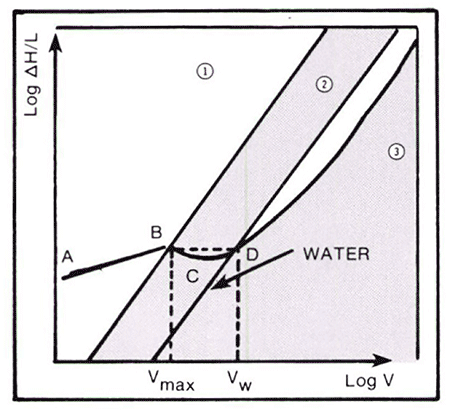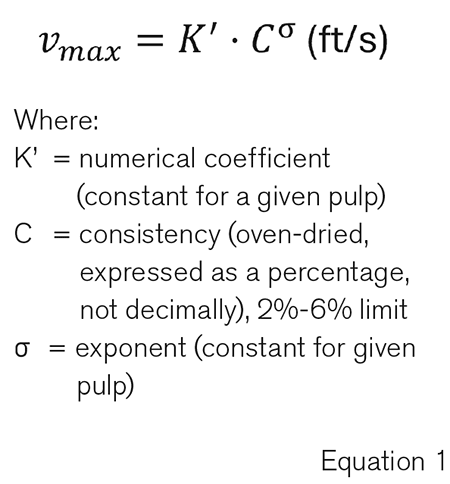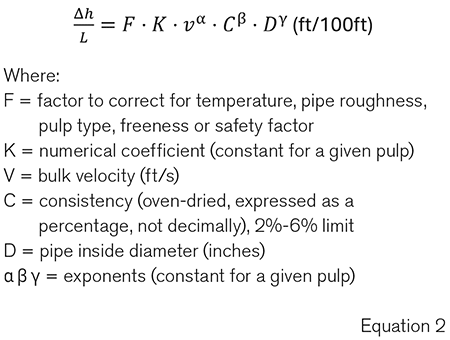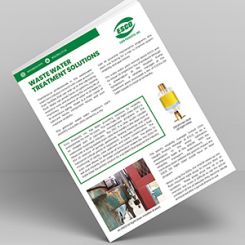
Paper stock can be mechanical or chemical pulp, which affects the calculation along with other factors. Mechanical pulp has had the fibers ground up to separate them, while chemical pulping uses a chemical to separate the fibers. These two pulps have distinct and different friction loss characteristics. The Hydraulic Institute (HI) Data Tool provides methods to calculate the losses based on technical information published by the Technical Association of Pulp and Paper Industry (TAPPI) listed in the references of the HI Data Tool website.
For chemical pulp, there are three distinct regions (Image 1). Point B is located at Vmax, which represents the upper limit of region 1. The calculations that follow are limited to region 1, which is from point A to point B.

For this example, the frictional losses of 4% kraft pulp flowing in a 12-inch diameter pipe at a flow of 4 feet per second (ft/s) will be calculated. The first step is to calculate Vmax to confirm if the flow is in the first region (Equation 1).

For 4% consistency kraft pulp in a copper pipe, K’ = 0.98 and σ = 1.2. By definition, C = 4. After plugging these values into Equation 1, Vmax can be calculated as 5.2 ft/s. Therefore, the flow is in the first region, and flow resistance (∆h⁄L) can be determined by the following equation:

For kraft pulp in a copper pipe, K = 11.40, α = 0.36, β = 1.89 and γ = -1.33, according to published literature. It will also be assumed that F = 1; however, in reality, this is often not the case. The friction head loss can be calculated as 9.5 feet per 100 feet of pipe.
For the full details and for different flow rates and/or different materials, refer to the paper stock section at datatool.pumps.org.

